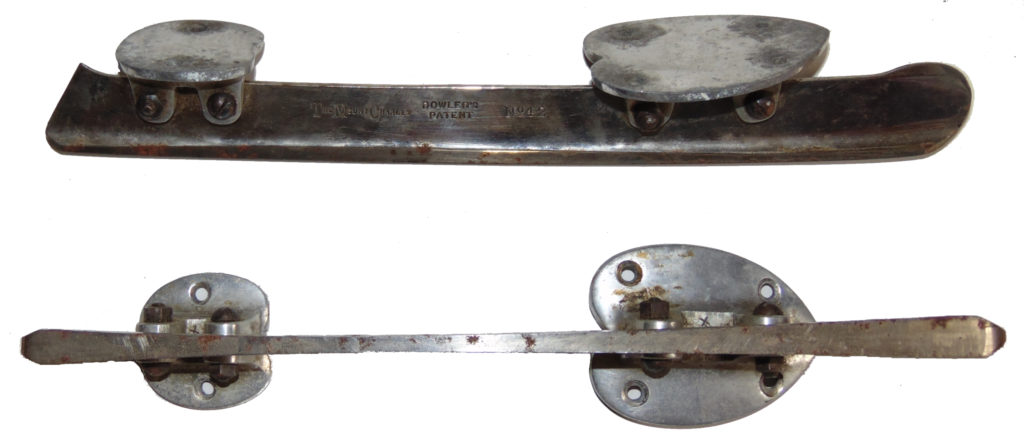Dowler blades look like a disaster for figure skating. They’re only slightly wider than modern freestyle blades in the middle, but flare out at the ends, to nearly half an inch wide. Invented in 1879, they enjoyed a brief period of popularity in the late nineteenth century.

These strange blades were immediately endorsed by skating great T. Maxwell Witham, author (with H. E. Vandervell) of the monumental A System of Figure Skating, which defined English skating. He enthusiastically recommended them in The Field in time for skaters to buy their own for the next season:
Towards the end of last skating season Capt. Dowler, a member of the Skating Club, astonished the other members by bringing to the club ice a skate made with concave sides. Several of the members tried it, and it was obvious, not only that it worked well, but that all movements were skated with very much greater ease and power on it than on the old form of blade. I myself gave it a good trial, and was so impressed with its merits that I persuaded Capt. Dowler to go at once to a patent agent and file a specification of his invention.
T. Maxwell Witham (1879, 479).
Dowler did as Witham advised, and his patent was granted. His intention was to make it easier to skate curves by having a blade that approximated one and, according to Witham, he was successful.
Dowler skates became the skates to have for some years after that. In The Babe, B.A., the eponymous character, desiring to skate,
bought himself a pair of Dowler blades with Mount Charles fittings, which he was assured by an enthusiastic friend were the only skates with which it was possible to preserve one’s self-respect, and fondly hoped that self-respect was a synonym for balance.
E. F. Benson (1897, ch. 20).
The popularity of these skates was not long-lived. In the year that The Babe was published, Mrs. Walter Creyke “asked the advice of many of the best skaters” and found that all
agree in condemning the Dowler blade (which I use and like), with one exception, and he told me that the second-class test could be skated on Dowlers.
Mrs. Walter Creyke (1897, 484).
In the earlier year of the twentieth century, the popularity of the Dowler blade waned further. Benson (1908, 16-17) recommended against purchasing Dowler blades despite their recommendation “by a shopman or by an enthusiastic friend.” H. E. Vandervell went further in The Figure Skate. After a full discussion (52–55) of the blades, he described his analysis of both convex- and concave-sided blades (55–69). After all that, he could
really see nothing in the convex or concave, after this searching inquiry, to dethrone the parallel [blade] from its well-deserved position, but on the contrary everything to enhance its value as far and away the best form of blade for curvilinear skating.
H. E. Vandervell ([1901] 2020, 69).
The Dowler skate went out of use not long after its invention. Today, it has largely been forgotten.
Mount Charles fittings may be a subject for another day. They are the two plates that attach to the boot and allow the blade to be screwed in. You can see them in the picture.
References
F. E. Dowler. 1879. Improvement in skates. US Patent 216,159A, issued June 3, 1879.
T. Maxwell Witham. 1879. “New form of blade for figure skates.” The Field, October 11, 1879, 479.

